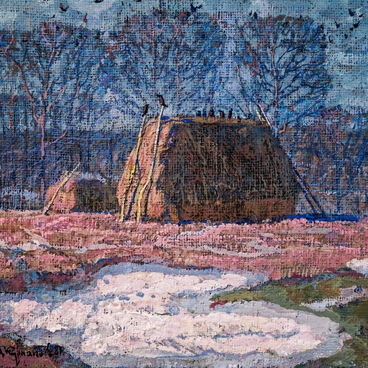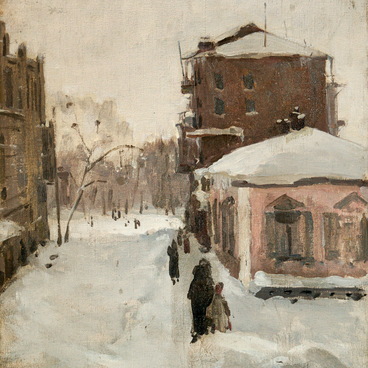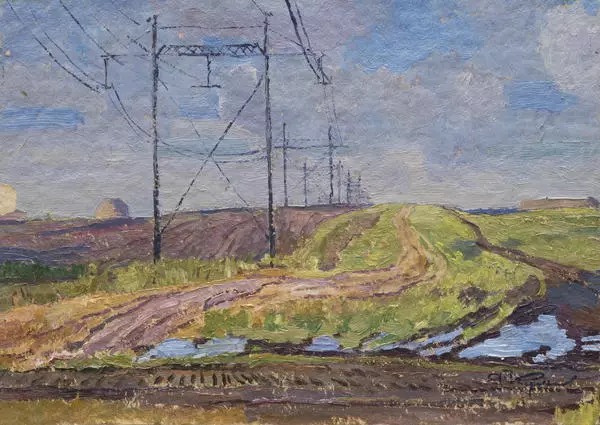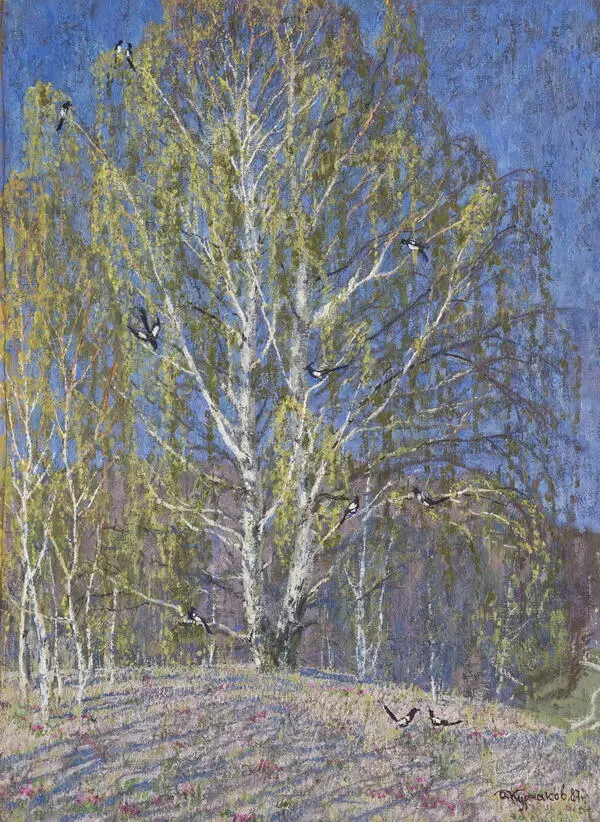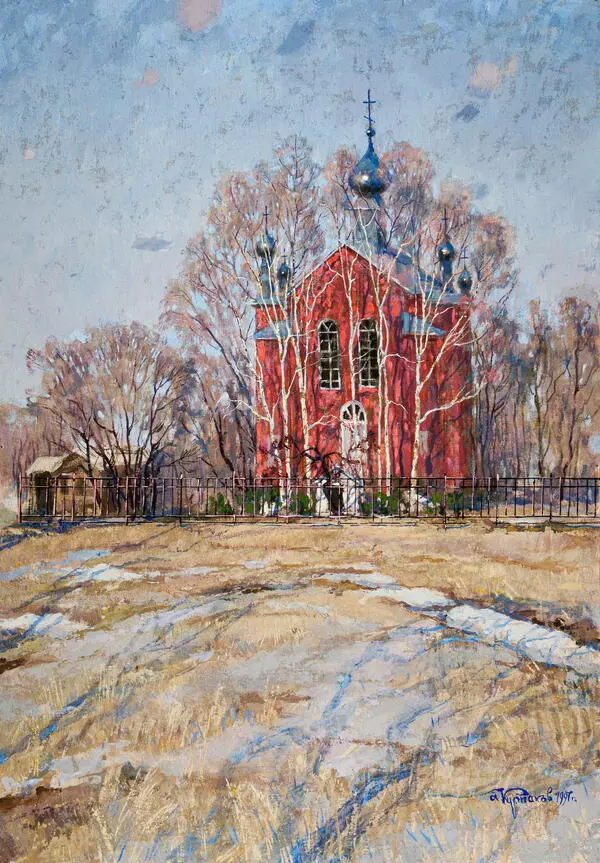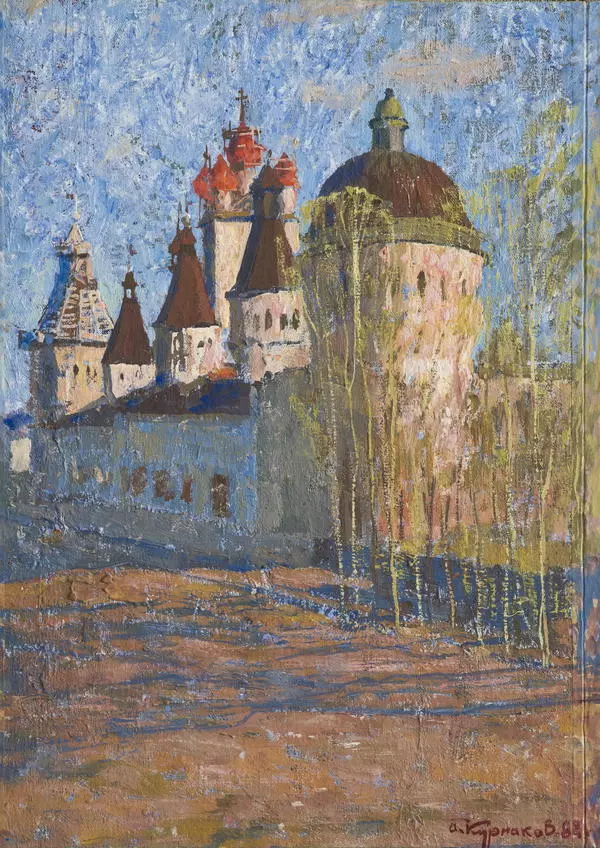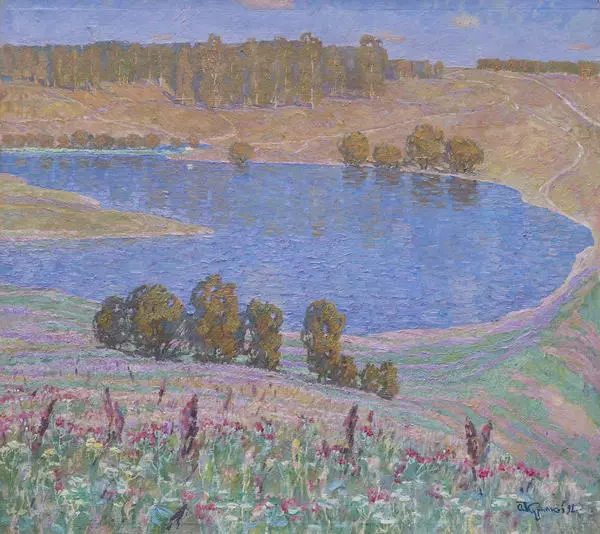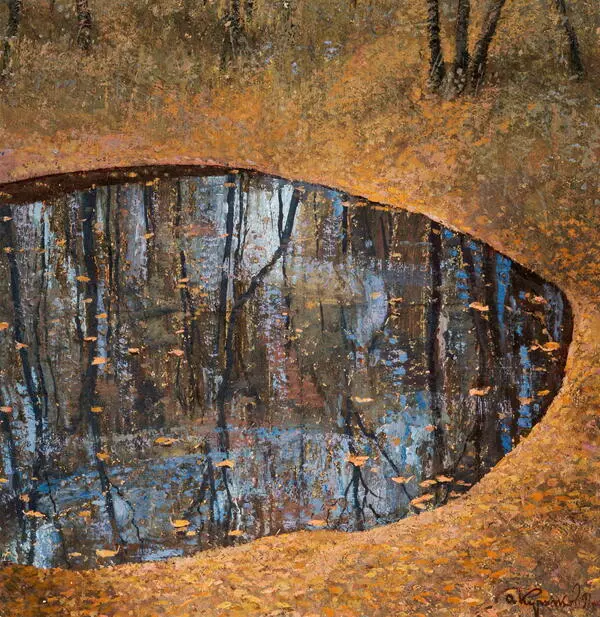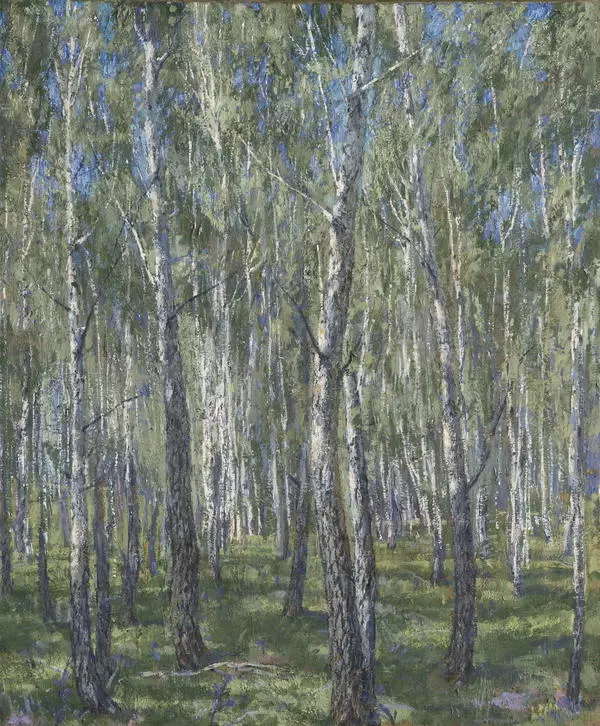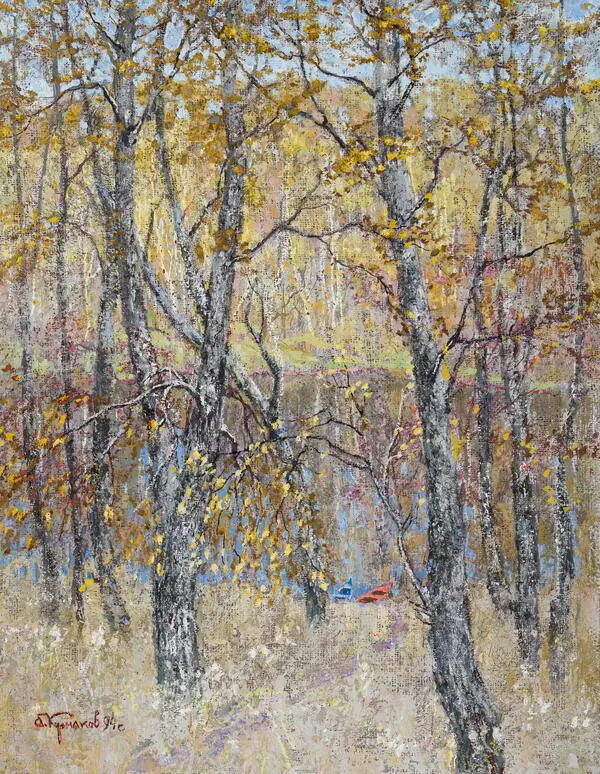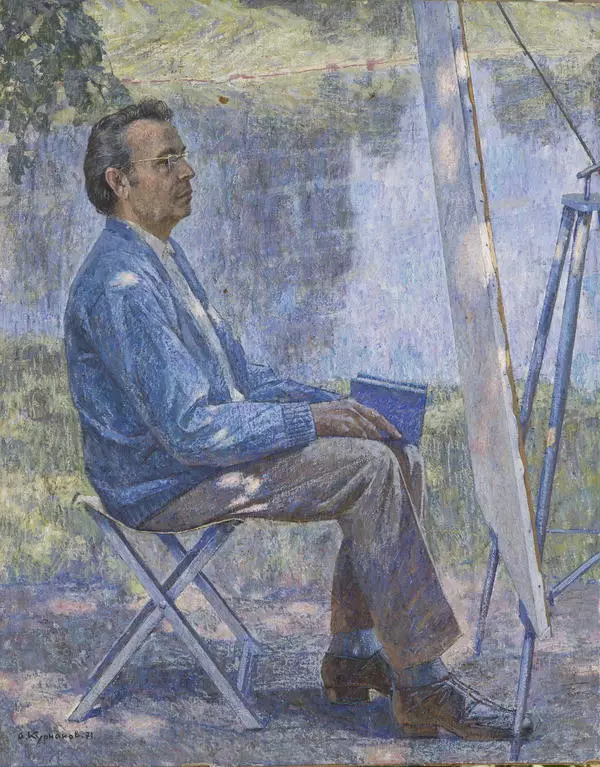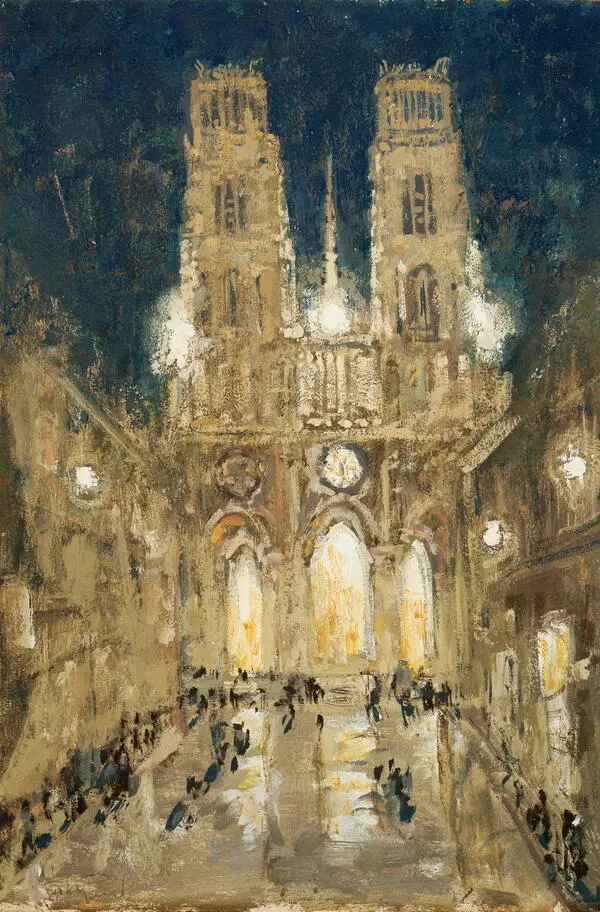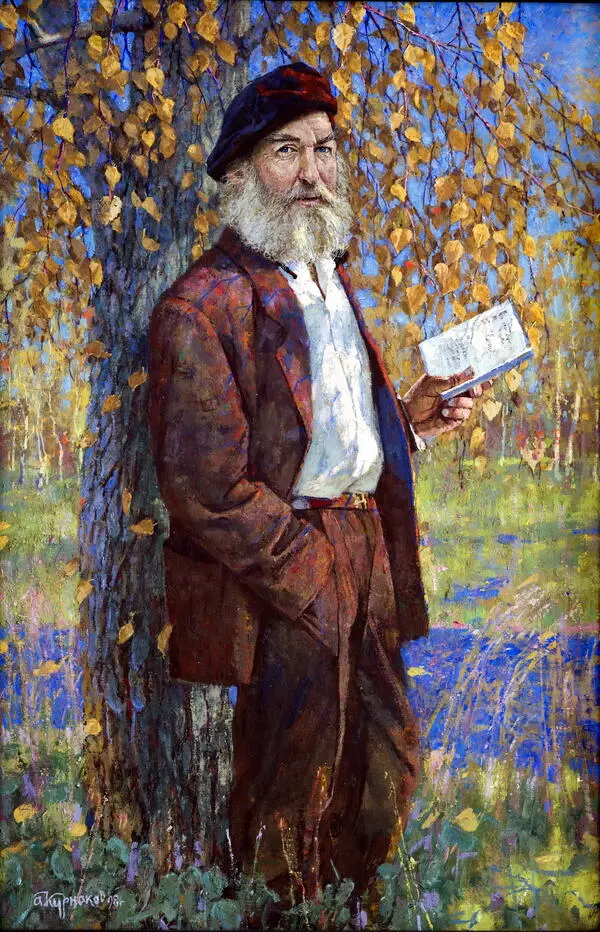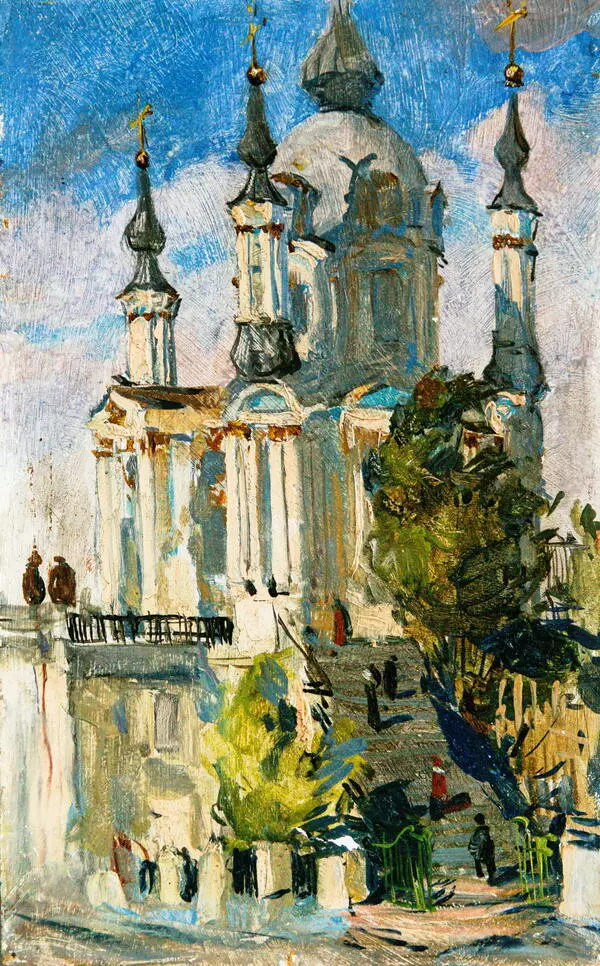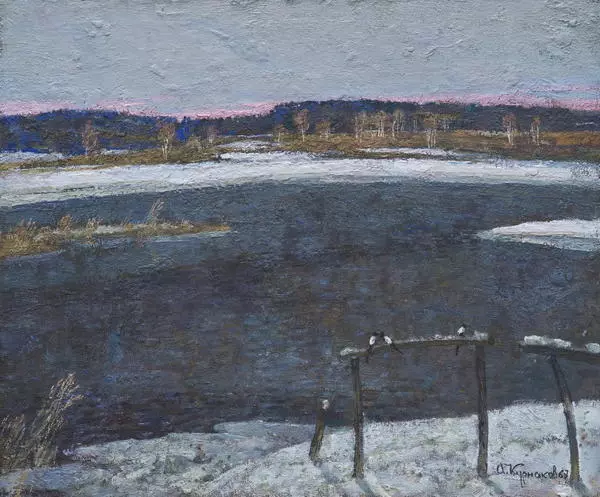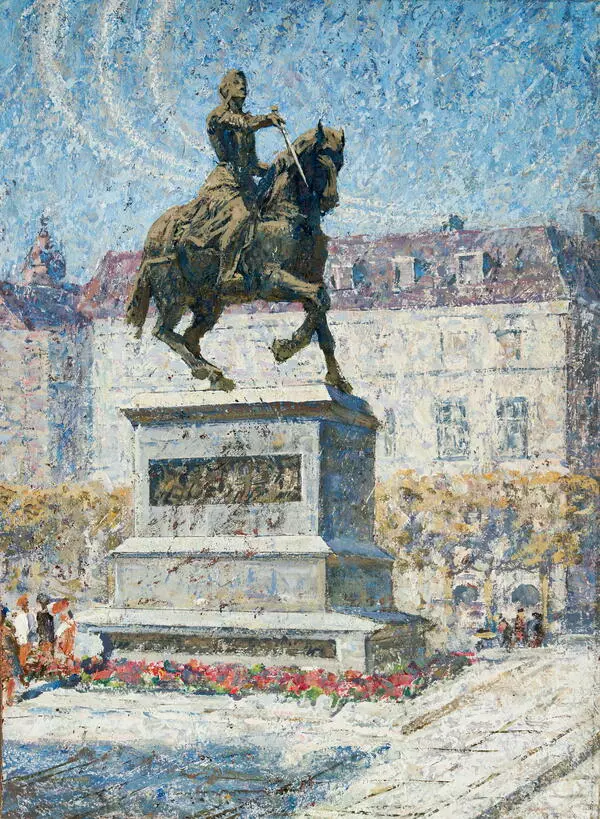The study “Zagorsk Lavra” with its special aura of optimism stands out from a large number of landscapes by Andrey Ilyich Kurnakov. The artist loved to use twilight glow and calm solid hues in his paintings, so the presence of bright and rich colors as in this picture, which depicts a church, is a rare occurrence in terms of his style.
The Zagorsk Lavra is actually the Trinity Lavra of St. Sergius. This Orthodox monastery, the most prominent one in Russia, is located in the center of Sergiyev Posad, Moscow Region, on the Konchura River. The landmark is a UNESCO World Heritage Site. Around fifty of the architectural structures of the Trinity Lavra of St. Sergius were built by the best Russian architects between the 14th and 19th centuries. The iconostases of the Trinity Church, which houses the relics of St. Sergius of Radonezh, were painted by Andrei Rublev and his apprentices. Unfortunately, the original frescoes have not survived. But even their copies perfectly render the beauty of the church interior. The Lavra is beautiful on the outside as well.
Kurnakov does not strive to accurately portray the panorama before his eyes. The domes and roofs of the churches and buildings of the Trinity Lavra of St. Sergius are shown closer to each other than they actually are. This decision helps the artist to recreate the magnificent ensemble of sounds and colors that mesmerized him.
“Zagorsk Lavra” is a bright sunny landscape depicting the time of mellow autumn that was so dear to the artist. Kurnakov uses only light warm hues. Painting in broad large strokes, without detailing the architecture, he captures joy and happiness — the exact emotions that overwhelmed him at the sight of this breathtaking beauty.
The background shows sun-lit golden clouds floating across the blue sky, while the middle ground reveals sparkling multi-colored church domes. Most likely, the landscape was finished in one sitting and was never subsequently changed in any way. This canvas reflects the main distinguishing features of the artist’s tempera painting: the paints are translucent, rich in color and do not wither. These qualities give the paint layer a matte and velvety finish and add volume and roughness — all that can be found in the artist’s works created during the subsequent years of his career.
The Zagorsk Lavra is actually the Trinity Lavra of St. Sergius. This Orthodox monastery, the most prominent one in Russia, is located in the center of Sergiyev Posad, Moscow Region, on the Konchura River. The landmark is a UNESCO World Heritage Site. Around fifty of the architectural structures of the Trinity Lavra of St. Sergius were built by the best Russian architects between the 14th and 19th centuries. The iconostases of the Trinity Church, which houses the relics of St. Sergius of Radonezh, were painted by Andrei Rublev and his apprentices. Unfortunately, the original frescoes have not survived. But even their copies perfectly render the beauty of the church interior. The Lavra is beautiful on the outside as well.
Kurnakov does not strive to accurately portray the panorama before his eyes. The domes and roofs of the churches and buildings of the Trinity Lavra of St. Sergius are shown closer to each other than they actually are. This decision helps the artist to recreate the magnificent ensemble of sounds and colors that mesmerized him.
“Zagorsk Lavra” is a bright sunny landscape depicting the time of mellow autumn that was so dear to the artist. Kurnakov uses only light warm hues. Painting in broad large strokes, without detailing the architecture, he captures joy and happiness — the exact emotions that overwhelmed him at the sight of this breathtaking beauty.
The background shows sun-lit golden clouds floating across the blue sky, while the middle ground reveals sparkling multi-colored church domes. Most likely, the landscape was finished in one sitting and was never subsequently changed in any way. This canvas reflects the main distinguishing features of the artist’s tempera painting: the paints are translucent, rich in color and do not wither. These qualities give the paint layer a matte and velvety finish and add volume and roughness — all that can be found in the artist’s works created during the subsequent years of his career.

